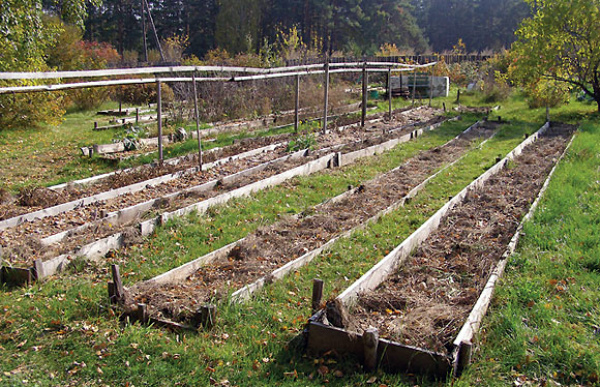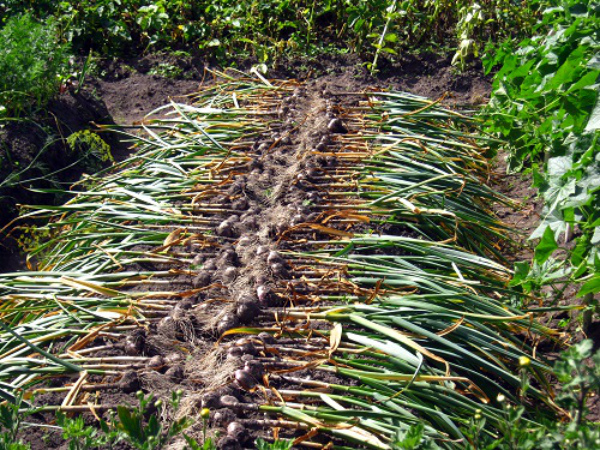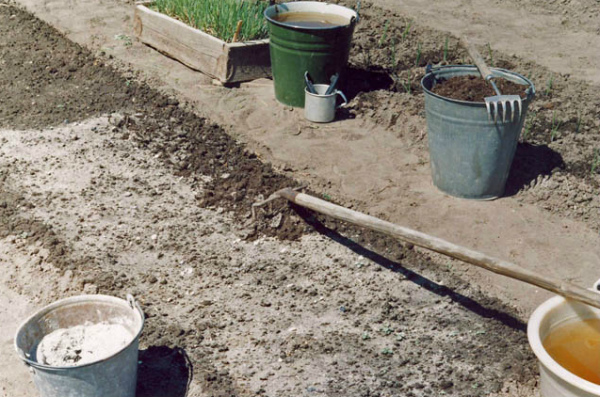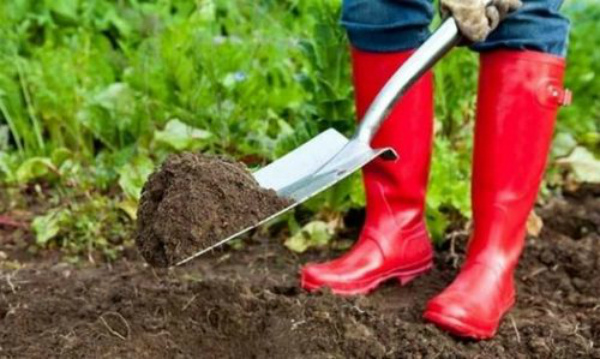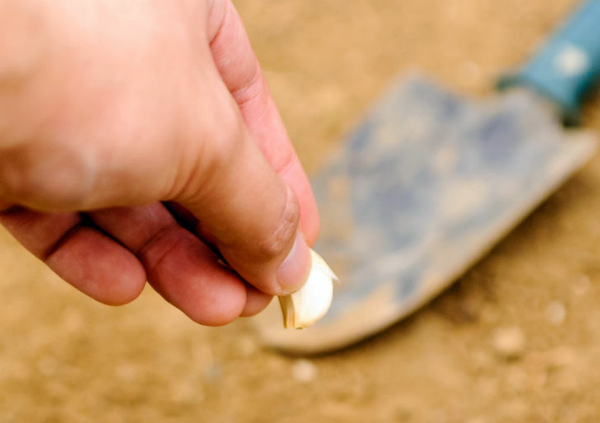How to prepare a garden for garlic in the fall
Content
Seat selection
It is very important to choose a suitable place that will fully provide winter garlic with plenty of sunlight, but at the same time will not accumulate water. That is, you should not plant garlic in depressions and lowlands, where water from melting snow will drain in the spring. The culture grows best on loamy soil, especially if the acidity is neutral or low. A big plus will be the presence of organic residues, which will turn into good fertilizer during the winter.
It is important to choose the right predecessors, because winter garlic is not “friendly” with all plants.
Garlic exhibits high yields and disease resistance when planted after cucumbers, peppers, eggplants, pumpkins, zucchini, tomatoes, early-ripening potatoes and cabbage. During their growth in the garden, they fertilize the soil well with various chemical elements, creating a favorable atmosphere for the growing season of garlic.
If possible, do not plant garlic after late-ripening potatoes, radishes, turnips, carrots. During their growing season, they take all useful trace elements from the soil. And in a short time of calm, after harvesting before planting, the soil does not have time to recover. Growing any crop on depleted soil is not the best idea.
Winter garlic should not be grown after any other type of garlic. Long-term cultivation of a crop in one place leads to the fact that insect pests and fungal spores settle in this area and lead to infection of new plants.
Tillage
The garlic bed must be properly treated with special preparations. In the fall, just before digging, the earth should be disinfected. The practice of using fungicidal preparations "Fitosporin" and "Topsin-M" for the destruction of fungal spores, as well as preventing their reproduction next year, is widespread. Antiseptics-insecticides "Acrobat" and "Radomil Gold" are also used. They should be combined with other chemicals to achieve the best result. The soil can be watered:
- a solution of copper sulfate (for this, 40 grams of the substance must be dissolved in 10 liters of water, 1 liter of solution is used per 1 square meter of the site);
- a strong solution of potassium permanganate (for this, dissolve the crystals of potassium permanganate in 10 liters of water to obtain a saturated raspberry solution);
- Bordeaux mixture solution (for this, dissolve 100 grams of the substance in 10 liters of water, as with copper sulfate, 1 liter of the resulting solution falls on 1 square meter);
- a solution of boric acid, copper sulfate, potassium permanganate (for this, mix 1 gram of each substance in 1 liter of water).
Prevention of the formation of fungal deposits is carried out with infusions of yarrow and calendula.
Also, on the eve of planting, the garlic bed should be fertilized. They use both ready-made fertilizer mixtures, which are sold in garden stores, and made independently. You can use any of the recipes below:
- Recipe number 1.You will need 1 bucket of mullein or horse manure, 1 tablespoon of double superphosphate, 10-12 grams of nitrophosphate, 1 cup of slaked lime. Mix the ingredients thoroughly and spread the mixture over 1 square meter of the area.
- Recipe number 2. You will need 15 grams of potassium salt, 20 grams of simple superphosphate, 1 bucket of organic fertilizer, 1 cup of slaked lime. The proportion is calculated for 1 square meter of land.
- Recipe number 3. You will need 5 kilograms of humus, 30 grams of granular double superphosphate, 25 grams of potassium salt. The proportion is calculated for 1 square meter of land.
Digging the soil for the winter is carried out to a depth of at least 20 centimeters, that is, approximately 1-1.5 shovel bayonets.
After you finish digging the site, water it well, and then cover it with polyethylene or roofing felt before planting.
Preparation of cloves and bulbs
Seed preparation is a step that should never be skipped. First of all, calibrate the cloves and bulbs, selecting only the largest, healthy, unaffected specimens. Even slightly damaged cloves should be discarded. Remove the “mother bottom” from each clove selected for planting so that it does not interfere with root germination. Also form small groups of bulbs by size.
A week before planting, winter garlic is soaked in a pink solution of potassium permanganate for a day. You can also use a solution of copper sulfate: for 10 liters of water, take 1 tablespoon of vitriol, soak for a day. Ash liquor is also used to harden the seed in the fall: 2 liters of solution with ash are boiled for 15 minutes in 5 liters of water, cooled, filtered and soaked in it for 2 hours the cloves.
Landing
For garlic to survive the winter well, you need to plant it correctly. On the site, make furrows up to 15 centimeters deep, backfill with 3 centimeters of clean river sand. Water well, and then lay out the cloves with the sharp part up, keeping a distance of 10-15 centimeters between them. After covering them with earth, water and mulch the beds again with straw, sawdust or pine needles. Before the onset of cold weather, cover the beds with roofing material.
The bulbs are planted in furrows 5-6 centimeters deep, laid on moistened sand at a depth of 3 centimeters, sprinkled with earth, watered and then mulched. Also, planting bulbs for the winter is possible in newspapers. On the beds, lay out newspapers with holes in which to place the bulbs, sprinkle with earth on top, pour and mulch with plant residues. This method will help get rid of weeds in the garden.
Video "Preparing the beds and planting garlic"
This video is about how to prepare the beds for planting garlic in the fall.

